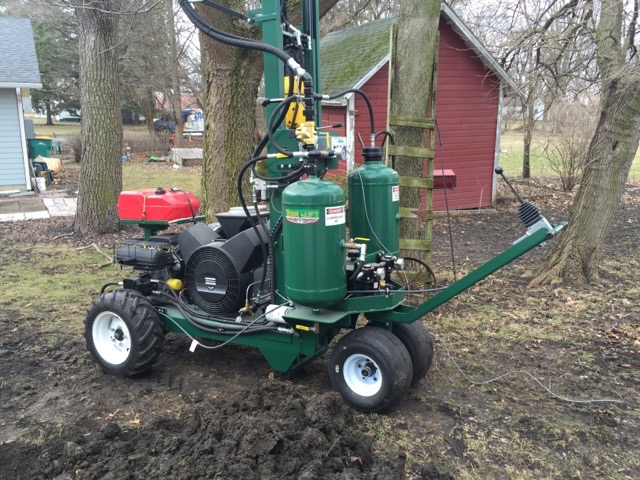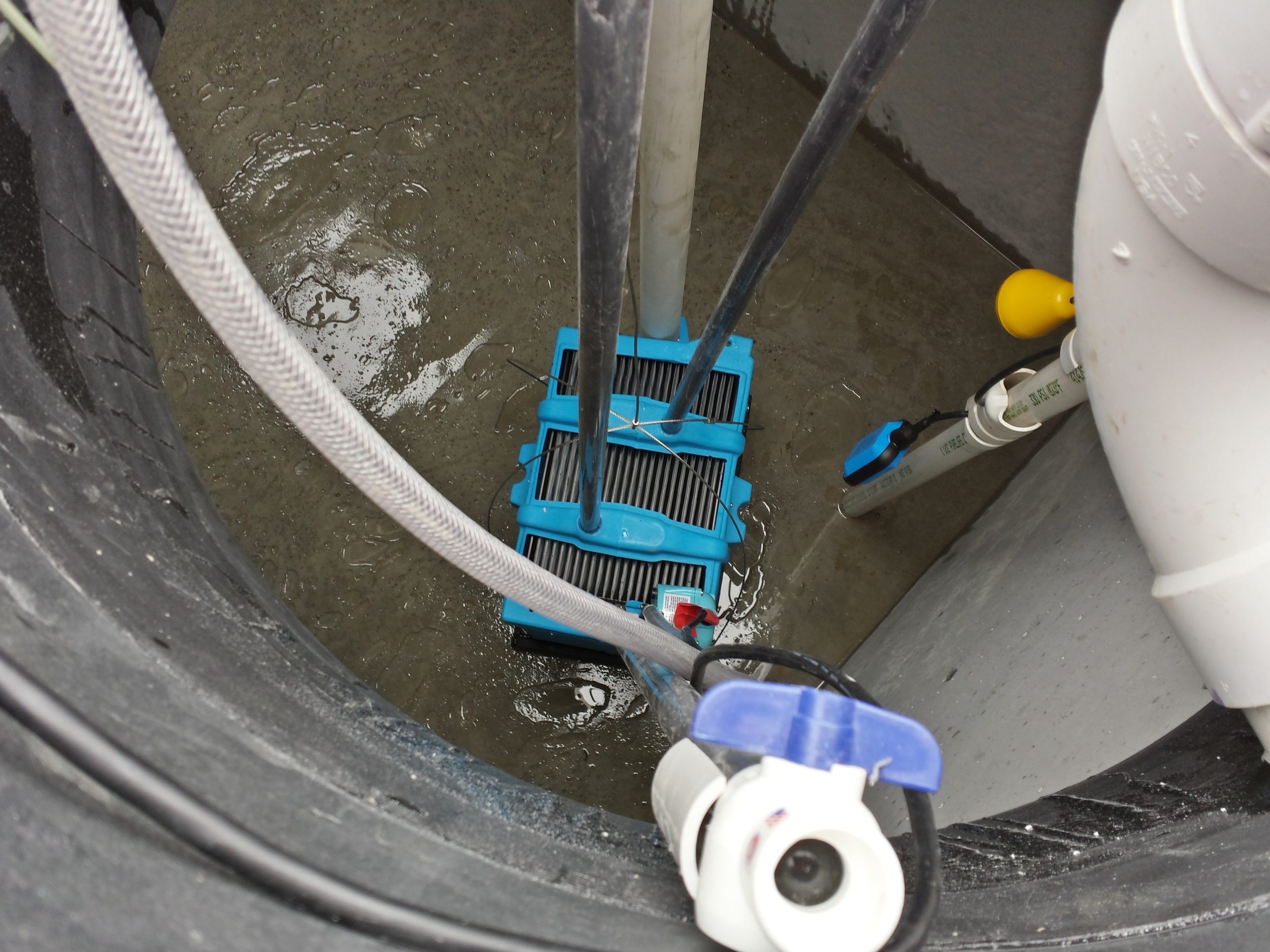Aerobic Unit
Aerobic units are miniature sewage treatment plants. These can be installed for Residential, Commercial, and Industrial use will require a high strength unit designed to treat a higher BOD. Most Aerobic units consists of a Pre-treatment tank followed by an aeration compartment, discharged into one of the following, depending on the county you live in: a subsurface or raised sand filter, a septic trench, or an effluent receiving bed. Any aerobic unit that surface discharges would require a chlorine contact chamber and or a sampling port. We are installing and servicing the Bio-Microbics FAST and the Sybr-Aer wastewater treatment systems, which we feel are the best residential & commercial units available, call for a free brochure & quote. The Fast unit has no electrical parts, floats, moving parts, filters etc located inside the tank. The media that is used has no maintenance involved. There is a blower that has a 2″ air line going to tank. When a lift station is required or a batch treatment plant (for use with raised filter beds) we use the SYBR-AER units. We provide service & service contracts for any and all types of Aerobic units. Please visit our Aerobics page and our Aerobic photo album.
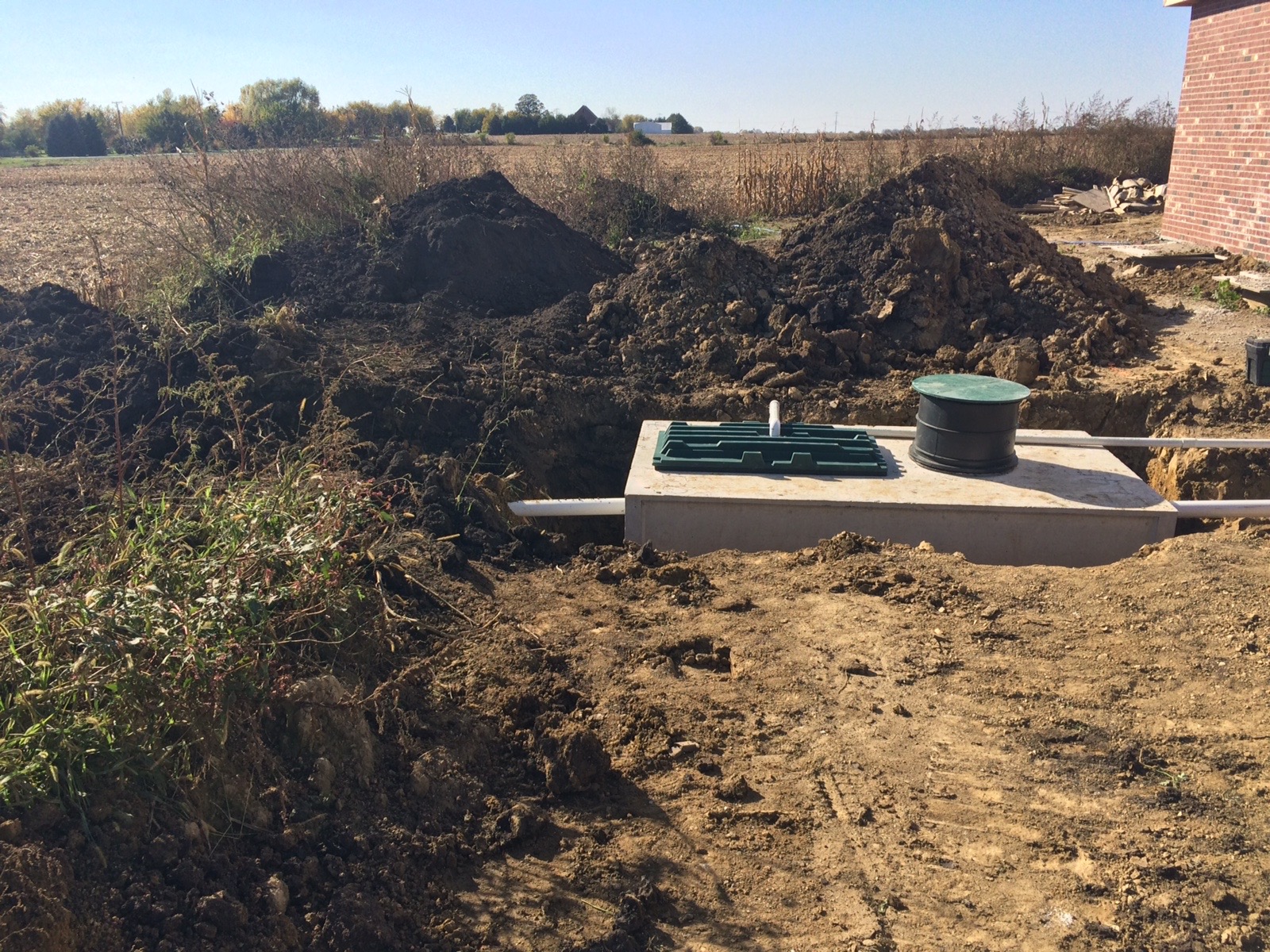
Biomembrane Water Recycling
What is a BioBarrier Membrane Reactor? (MBR)
These are advanced systems designed specifically to treat all the wastewater (blackwater & greywater) generated onsite from single-family homes or other small-flow applications that far exceed effluent requirements. NSF/ANSI Standard 350 certified for Water Reuse (the first to receive this distinction), this provides new construction and renovation/repair projects in “water constrained areas” with new opportunities for water recycling. Another big benefit for the homeowners is having the use of their backyards. Now you have room for decks, patios, pools, outbuildings etc etc. The MBR unit significantly reduces the size of the absorption fields required. The MBR systems have turned unbuildable lots into build-able lots, whether it was an issue with the soils that would not allow a conventional wastewater treatment system or the topography.
Please do not confuse the MBR as a conventional septic or an Aerobic unit system, it is not. This is a true water recycling system and therefore cannot be treated as a conventional system. Since the elimination of phosphates in the everyday cleaning products we have found that Quaternary Ammonium products have an adverse affect on the biomass growth. You have to be conscious of what you are using in the household to protect the biomass development. If it gets killed off the MBR will do what it was designed to do and shut the pump off so you cannot send any contaminated or untreated water out to the absorption field.
The BioBarrier systems allows Zeiter’s Septics to meet all of the challenging situations that we are faced with on a daily basis. We are proud of our team and we have the knowledge and experience to work through any and all situations that present themselves. Please go to our services page or click on the link below for much more information.
Chamber Systems
Zeiter’s Septics were one of the first installers to use this product back in the late 1980’s. It has taken quite some time for the other companies to realize the benefits of the chamber product. Some people just don’t like changes or are afraid to try anything new, not us. The Infiltrator and ADS chambers are a direct replacement for old fashioned stone and pipe leach fields installed in a 3 ft. wide trench. You get 40% more storage in the same space without the drawbacks to a conventional gravel system of soil compaction which happens from going back and forth from the gravel pile to the trench. Also, there is no excess stone to be cleaned and hauled off site. You also get a significant reduction in square footage by using the chamber system. We do not always agree with this and normally will only allow it on a repair where we simply do not have the room to install any additional footage. For more information on Infiltrator & ADS products please see our photo gallery page and visit their web sites at www.infiltratorsystems.com or www.ads-pipe.com

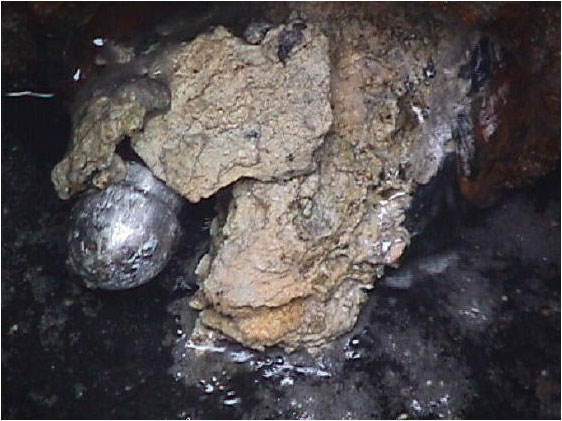
Camera Inspections
A picture is worth a 1000 words. This is a typical grease and soap stone build-up we discovered on a service call from a local school district. Initially we jetted in 20′-30′ and broke through the obstruction. In the past practices we would have said OK everything is flowing the blockage has been cleared. However, with the new technology available today and our sincere desire to provide the best possible service to our customers. We use one of our color cameras to inspect the line to ensure that our diagnosis is correct. In the above case without the camera we would have never discovered that 130′ of 6″ line had a build-up which only left about 3″ of open pipe. We can provide our customers with a video & or report if required. All of our camera heads have built in sondes as well as foot counters that allow us to pinpoint the broken or cracked pipes, back pitch on pipes, tree roots and other obstructions that may exist. We have the capabilities to send the camera and jetter in together especially when root cutting is required so we can monitor the progress as we are cleaning. We offer preventative maintenance programs to fit your needs.
Ecoflo Coco Filters
ECOFLO COCO FILTERS HAVE A 10 YEAR WARRANTY ON THERE MEDIA. NO OTHER PRODUCT CAN PROVIDE THIS.
We are the local distributor & installer for the Premier Tech Ecoflo Coco Filter system in Illinois. We wanted to add them to our list of services for a variety of reasons. Not one type of wastewater treatment system will work on all sites. There are over 100,000 systems installed The coco filter allows us with an a wide variety of alternative solutions. They have the longest warranty of any product! All biomat buildup is contained inside the unit if & when it was to fail you simply vacuum it out and install new coco media and you start a new 10 year warranty. They have just released 50% smaller compact units and the all in one series Eco PACK which is the septic tank and coco filter in one compact space. Please visit our Coco filter photo album and downloads page for a brochure and more information.


High Velocity Water Jetting
LPP (Low Pressure Pipe)
First of all I believe this is the best way to install any type of on-site wastewater trench system, sub-surface sand filter or an above ground system commonly known as a raised filter bed. . When you pressure dose to the final absorption field you are evenly distributing the treated wastewater over the entire area of the system. You have control of how much effluent & how often you need to distribute the effluent by either an on demand panel or a timed dose panel. Each Residence or Commercial site is unique in that they have different water usage. All of the local Health Departments are requiring systems to be installed shallow to maintain a 2′ minimum vertical separation from the limiting layer. When an installer has to meet these requirements a lift station is needed to do this. If you have to install a lift station anyway, all you need now is to add a control panel & some extra pvc piping.
•On a gravity fed system when you are running water in the household there is a constant trickle or flow into the septic field for as long as 20-30 minutes after you stop running the water inside the house. We may have a graduation party or pool party at the house, or we fall behind on washing clothes and do more loads then we normally would have to and the system is overloaded that day. With a pressure dose system you have control over surges and excess water usage. This is achieved with a tank, pump or pumps and floats with a controller panel.
•Do you want to dose the same trench day after day until it eventually seals it self off with the biomat build-up and can not take anymore & then flows on to the next trench to start all over again? Or do you want to evenly distribute the daily flow over the entire system? For example say you have 500 lineal feet of septic field or a sand filter and you wanted to dose it with 400 gallons per day four times a day. You could dose it with 100 gals every six hours. You would be dosing it through 500′ of 1-1/2″ pvc pipe with a 3/16th’s hole every 5′. This pipe is suspended inside the Infiltrator chambers. There would be a total of 100 holes discharging 1 gal per hole four times a day. This type of system is going to have a much, much longer life span. The same principle applies to just about any type of septic system you may be required to use. Please if you have any questions or not quite sure you understand please call me, I would be happy to explain it more. We have been Installing since 1978 and we are continually learning about the new technologies that are available for the on site wastewater industry. We will be updating our photo page with our own pictures in the near future for now I have provided some from one of our suppliers. Please look at our pictures on the photo gallery page.

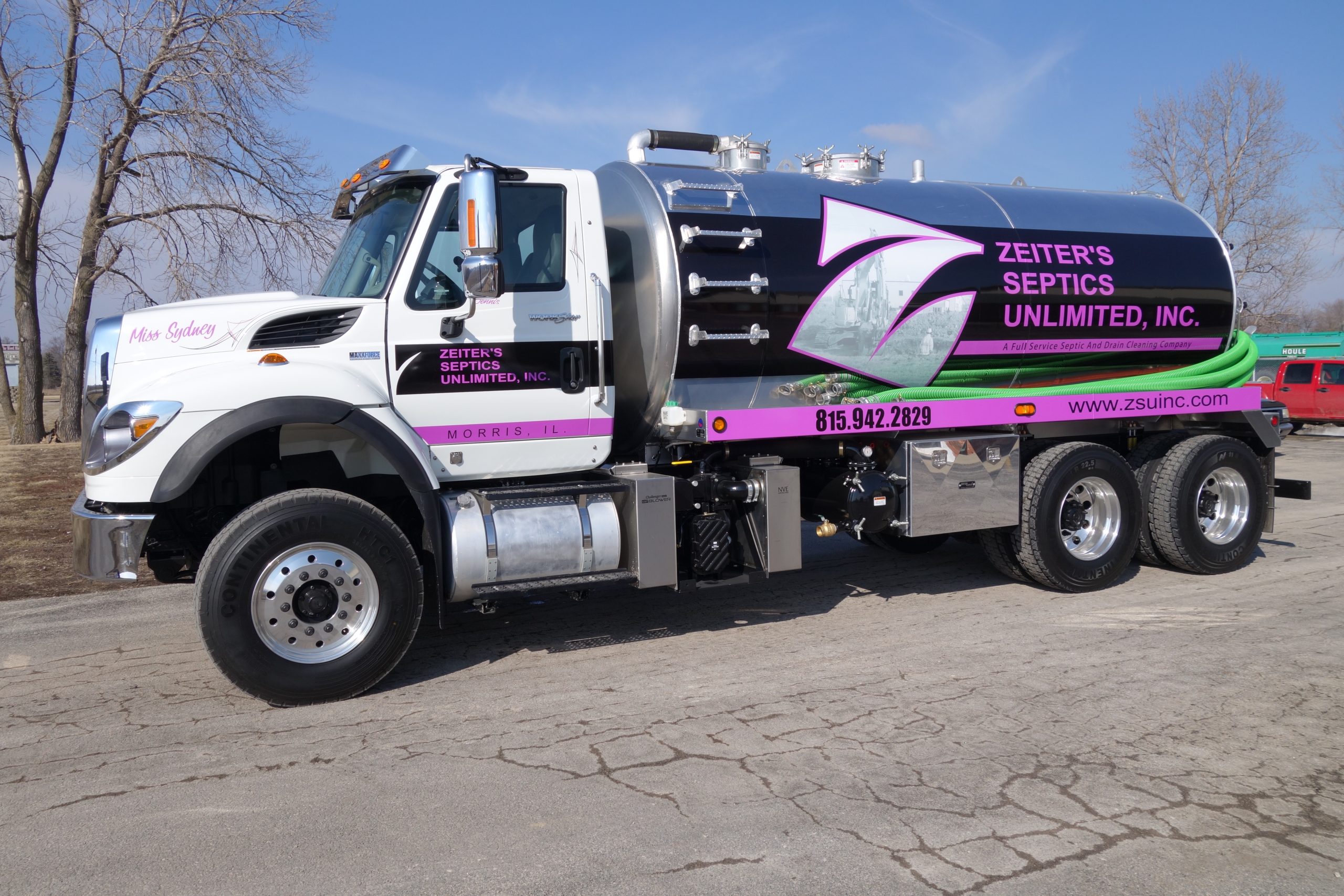
Pumping
Raised Filter Beds
First of all I believe this is the best way to install any type of on-site wastewater trench system, sub-surface sand filter or an above ground system commonly known as a raised filter bed. . When you pressure dose to the final absorption field you are evenly distributing the treated wastewater over the entire area of the system. You have control of how much effluent & how often you need to distribute the effluent by either an on demand panel or a timed dose panel. Each Residence or Commercial site is unique in that they have different water usage. All of the local Health Departments are requiring systems to be installed shallow to maintain a 2′ minimum vertical separation from the limiting layer. When an installer has to meet these requirements a lift station is needed to do this. If you have to install a lift station anyway, all you need now is to add a control panel & some extra pvc piping.
•On a gravity fed system when you are running water in the household there is a constant trickle or flow into the septic field for as long as 20-30 minutes after you stop running the water inside the house. We may have a graduation party or pool party at the house, or we fall behind on washing clothes and do more loads then we normally would have to and the system is overloaded that day. With a pressure dose system you have control over surges and excess water usage. This is achieved with a tank, pump or pumps and floats with a controller panel.
•Do you want to dose the same trench day after day until it eventually seals it self off with the biomat build-up and can not take anymore & then flows on to the next trench to start all over again? Or do you want to evenly distribute the daily flow over the entire system? For example say you have 500 lineal feet of septic field or a sand filter and you wanted to dose it with 400 gallons per day four times a day. You could dose it with 100 gals every six hours. You would be dosing it through 500′ of 1-1/2″ pvc pipe with a 3/16th’s hole every 5′. This pipe is suspended inside the Infiltrator chambers. There would be a total of 100 holes discharging 1 gal per hole four times a day. This type of system is going to have a much, much longer life span. The same principle applies to just about any type of septic system you may be required to use. Please if you have any questions or not quite sure you understand please call me, I would be happy to explain it more. We have been Installing since 1978 and we are continually learning about the new technologies that are available for the on site wastewater industry. We will be updating our photo page with our own pictures in the near future for now I have provided some from one of our suppliers. Please look at our pictures on the photo gallery page.


Septic Tanks and Filters
Septic Inspections
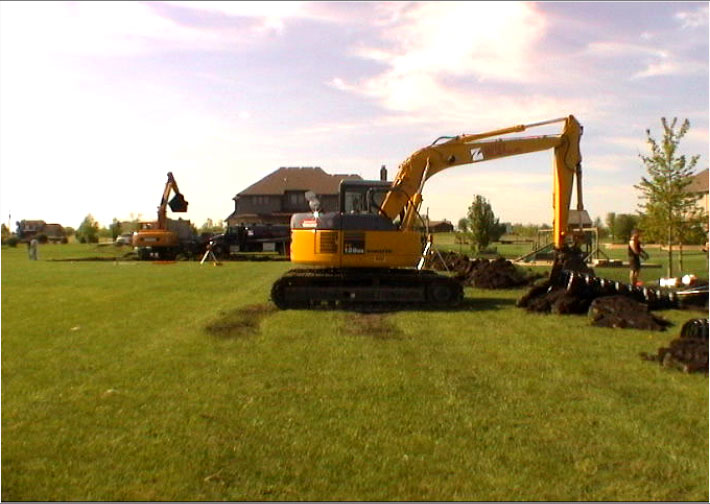
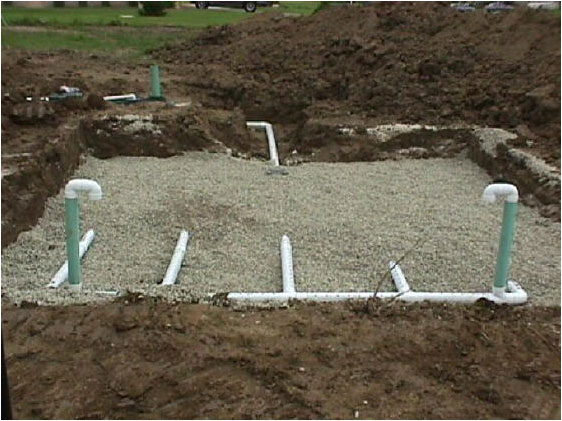
Subsurface Sand Filters
Terralifting
Spring of 2016 we purchased our second Terralift machine.
An alternative method to failing septic fields. See FAQs & Tips for answers to your questions on why Septics fail. A Terralift can provide a solution that is fast, effective and relatively inexpensive. In a few hours, years of life can be added to your septic system with little disturbance to your yard. The Terralift machine uses a long, narrow probe and an integral pneumatic hammer to penetrate the soil to depths of 3′ to 6′ depending on the depth of the leach field or sand filter. It then forces air and injects polystyrene pellets into the soil at a controllable rate using a special high-pressure compressor creating a network of hairline cracks, and fissures. This will allow oxygen into the soil and helps break down the biomat that has formed on the walls of the trenches, and loosens the compacted soil in the leach field. The pellets keep air and water passages open to ensure proper leaching and transpiration. This operation is repeated every 6-8 foot, depending on soil conditions, around each of the septic trenches. We also incorporate Pro-Pump and Septic Scrub into the system to help break down the biomat. We have confidence in this procedure especially if the absorption field has worked for 20 plus years. That is a good indication that the soils are good and we should be able to rejuvenate the field and get some extra life out of the failing system. We have been performing this procedure since 1994, and have performed well over one thousand Terralifts with excellent results. Check out our photo page.
